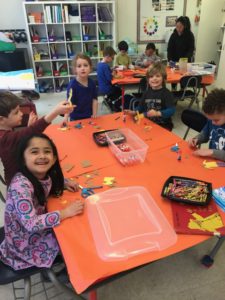La lectura
This week we read one of my favorite stories, Tillie y la pared. Tillie imagines that just beyond the wall, there is a fantastic world. Spurred on by her curiosity, Tillie and the other mice try to climb the wall, bore a hole into it, and go around it, all to no avail. But Tillieś perseverance finally pays off.
We actually paused the story and each student illustrated and wrote their prediction for what they thought Tillie would find on the other side.
Our weekly objectives were to:
- make predictions
- identify location words
- identify action words (verbs)
- use the words of the day in complete sentences: abajo (down), abre (open), adentro (inside), amigo (friend)
- complete syllable and/or word dictation
- fluently read their little reader (please be sure to practice these on a routine-nightly basis)
Las matemáticas
Here are some of our learning goals in math. Math is everywhere and we are constantly counting, representing numbers in different ways, and comparing.
- Compose and decompose numbers from 11 to 19 into ten ones and some further onesand 20 as 2 tens.
- Compose and decompose numbers less than or equal to
10 into pairs in more than one way. - Use +, -, and = to write number sentences for addition and
subtraction stories. - Represent quantities with objects, number cubes, fingers,
pictures/drawings, number cards, acting out, tallies, and
numerals. - Build skills in comparing sets,and addition and subtraction
encountering, discussing, andsolving problems.
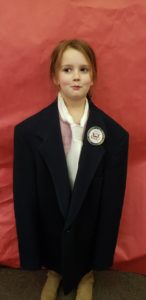 History & Geography
History & Geography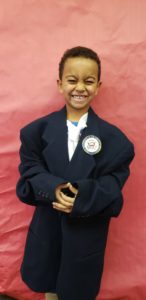
We continued to learn about Colonial trades people, focusing still on miller’s and adding weavers and spinners. On Tuesday the class heard the story of The Miller of Dee and then listened to the traditional song. It was a great lesson on humbleness and envy. We also worked on making a Presidents Day class book.
Our weekly objectives were to:
• identify the process of making flour
• describe the life of a miller
• identify, and associate with the appropriate trade, the tools used by millers, spinners, and weavers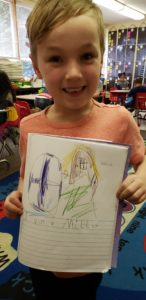
• explain how the trades people in colonial towns saved farming families time and effort
• identify cotton, flax, and wool as the original plant or animal products needed for making cloth
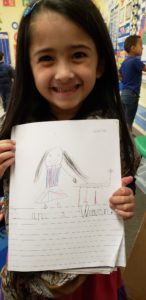 • describe spinners and weavers in colonial town
• describe spinners and weavers in colonial town
• describe the process of making cloth from cotton, flax, or wool
Science
Our focus on taking care of the Earth this week was to read and talk more about conservation . We focused on recycling and repurposing our trash.
Our weekly objectives were to:
• recognize the phrase “Reduce, reuse, recycle” and explain how doing these three things can help to conserve natural resources
• identify the recycling symbol and understand that recycled materials are made from items that have already been used and otherwise would have been garbage
• brainstorm ways in which we as individuals can reduce the amount of garbage we create and put into landfills.
Specialists
Art with Ms. Kelly
Our art projects this month were:
Valentine Heart Picture
Drawing and cutting out hearts. The kiddos worked very hard drawing and cutting out hearts to make cute Valentine Birds.
Rainy Day Collage Picture
Book: A Letter for Amy by Ezra Jack Keats
Focus: Paint a stormy sky with watercolor, and use basic shapes to make a picture of Peter in his raincoat.
The students did a great job on all of these projects!


